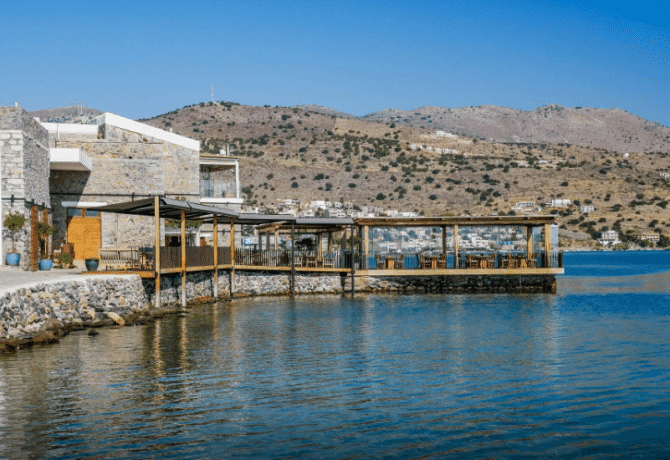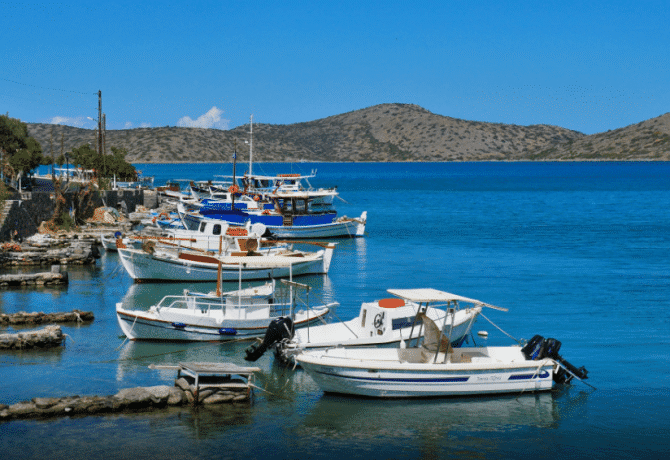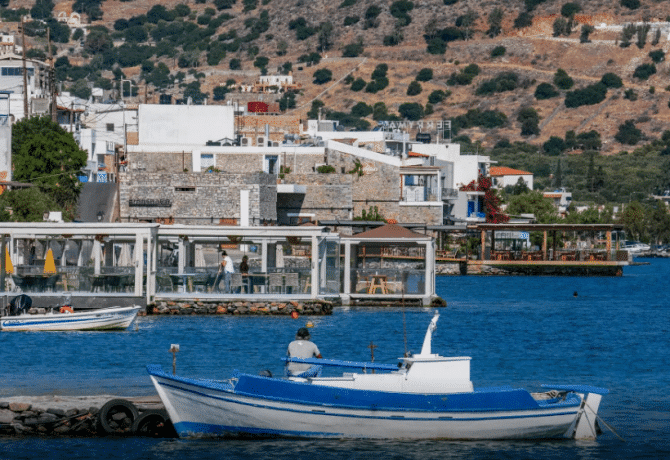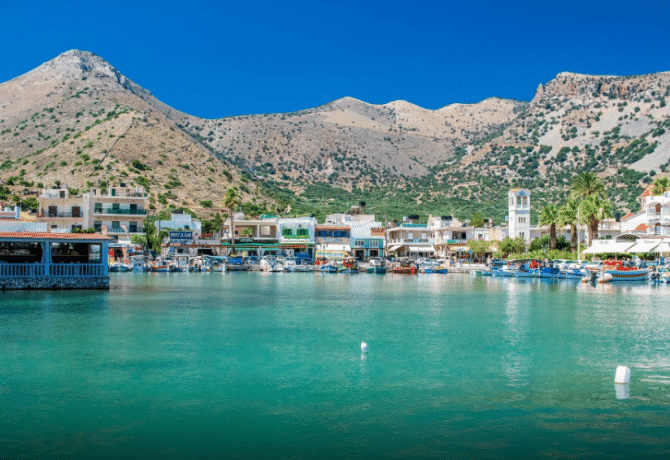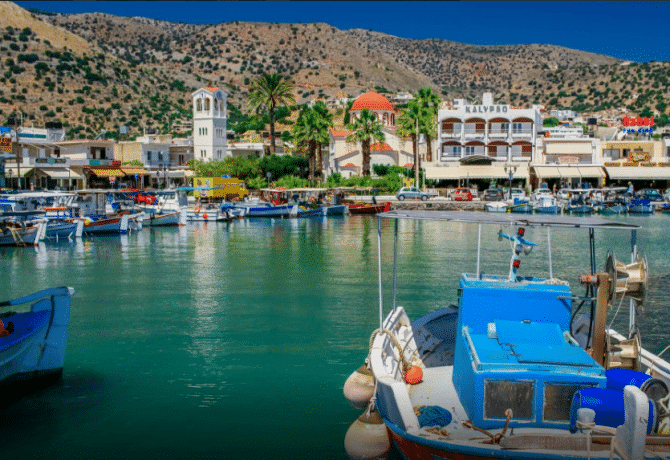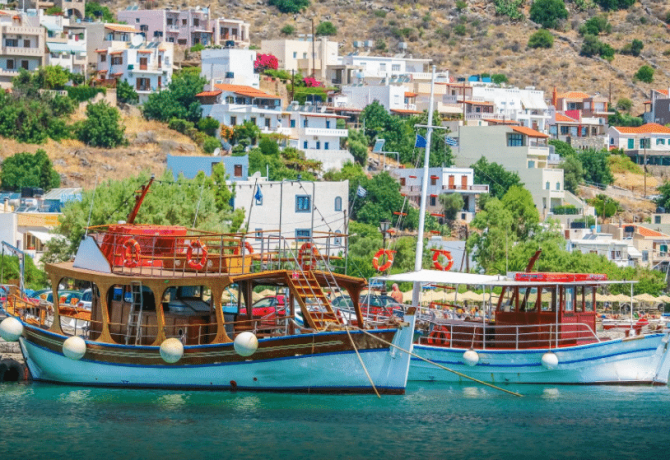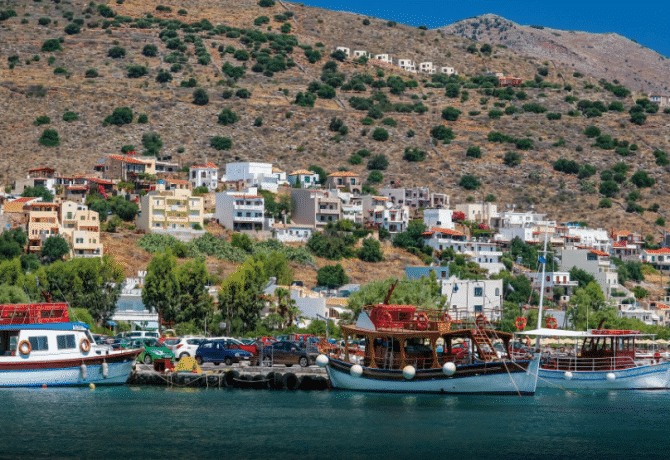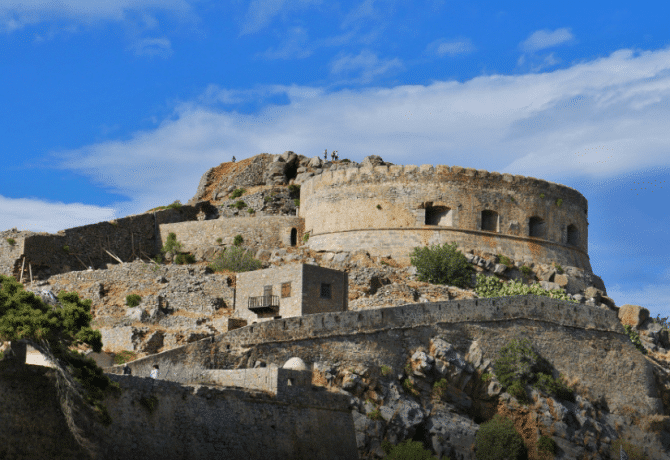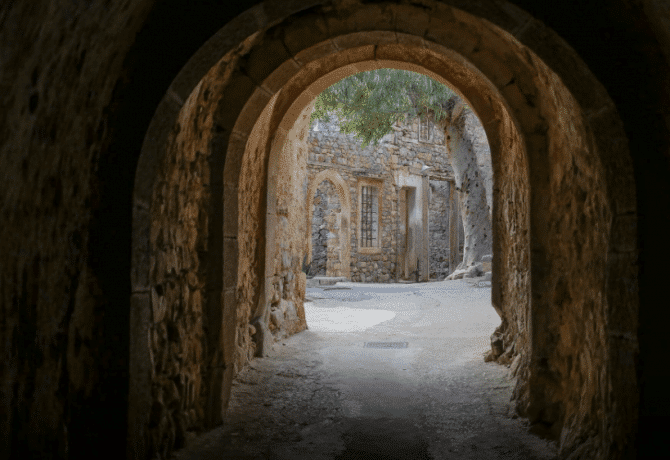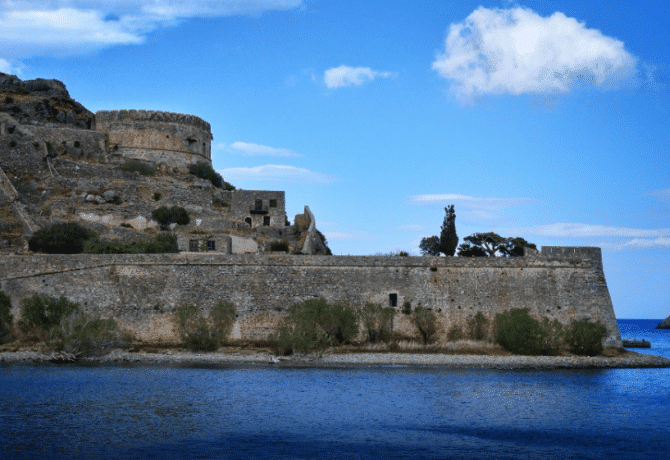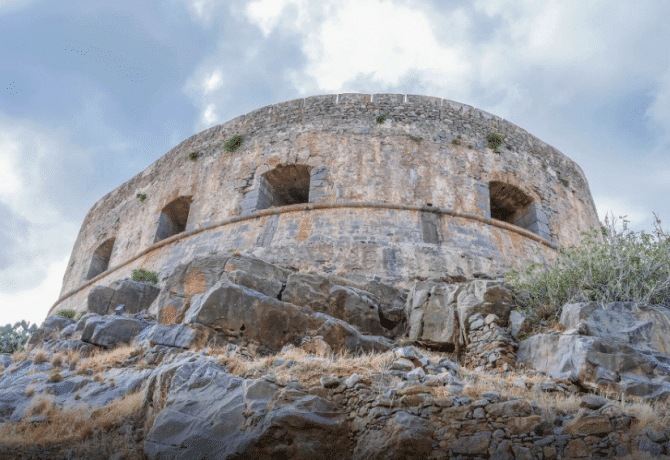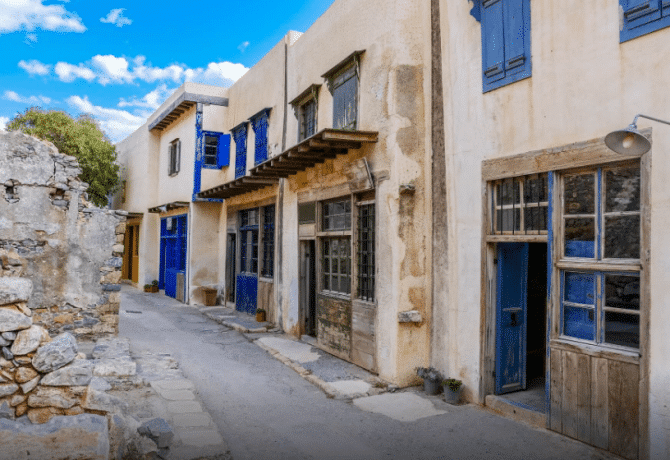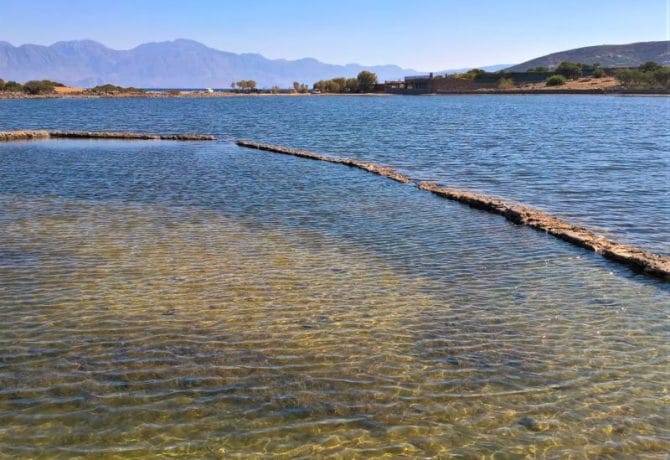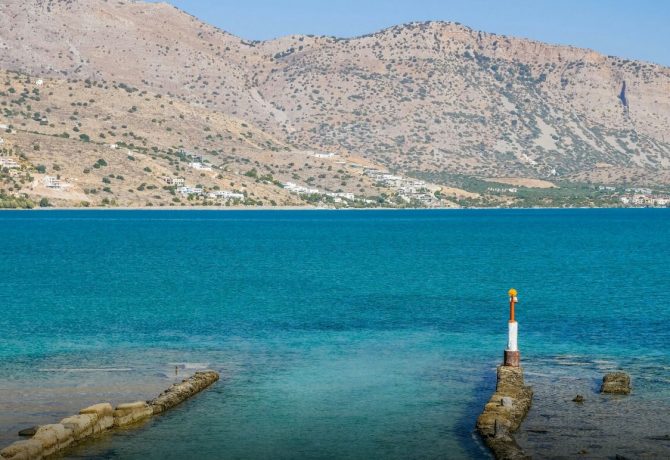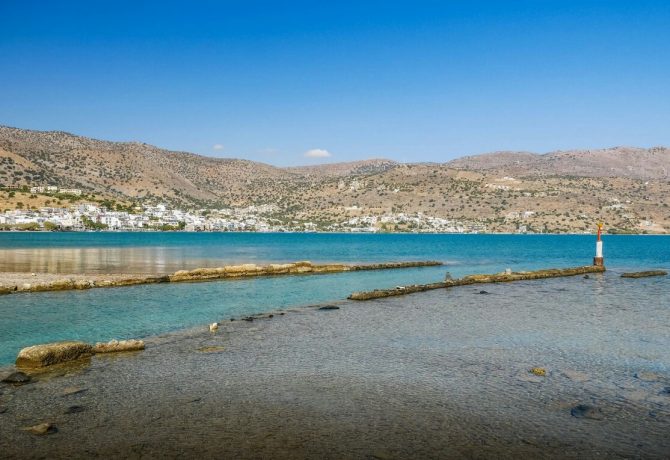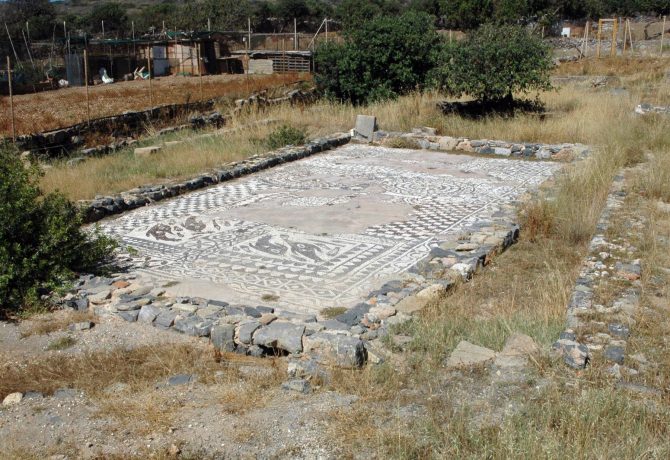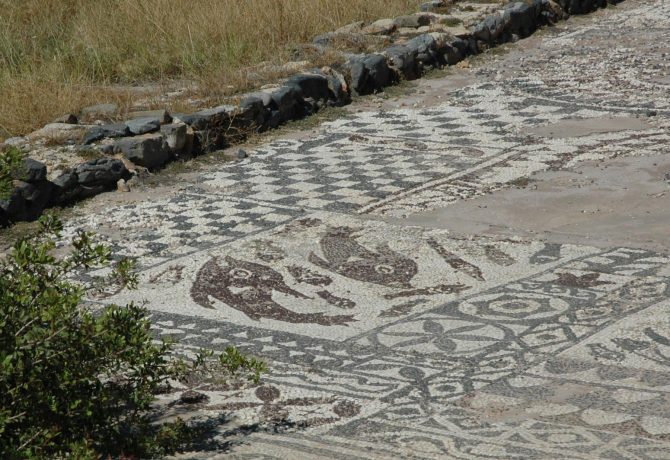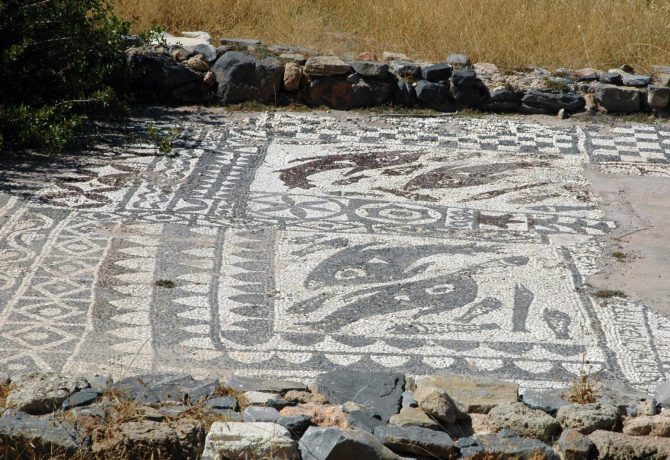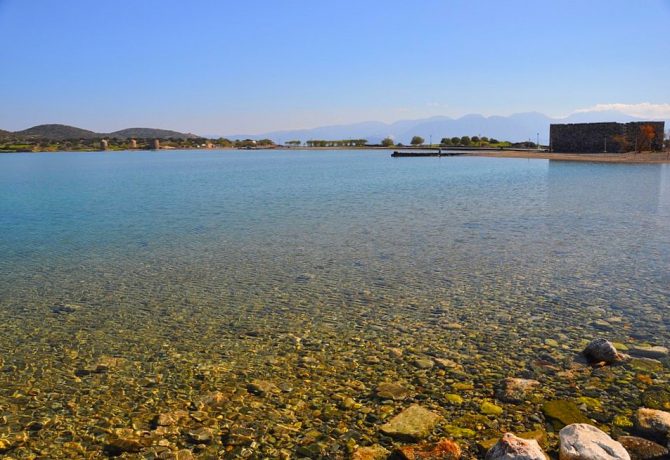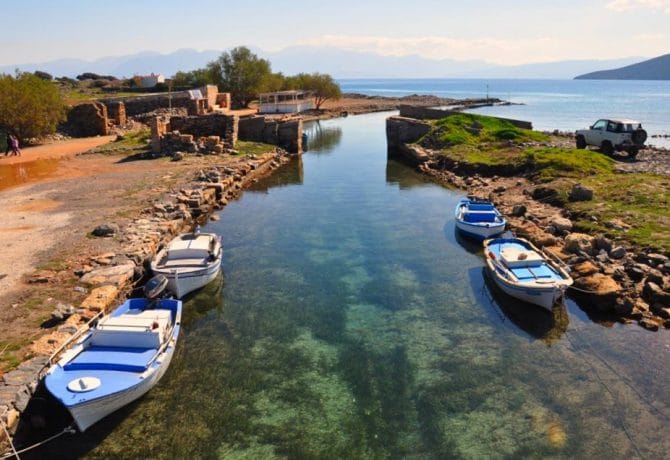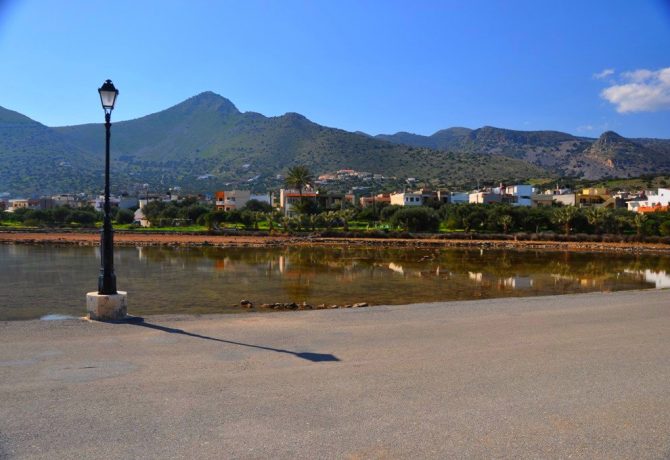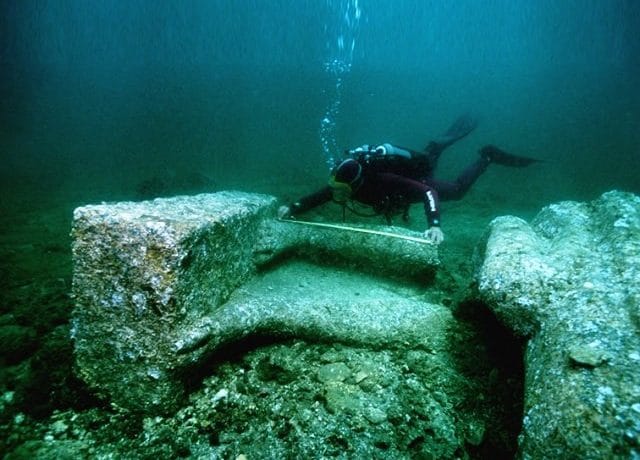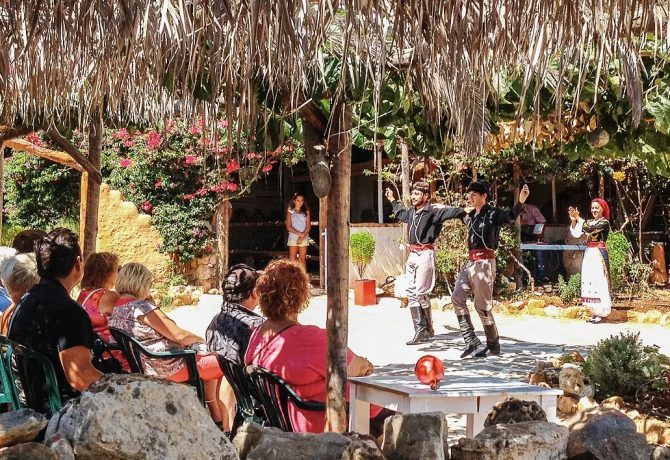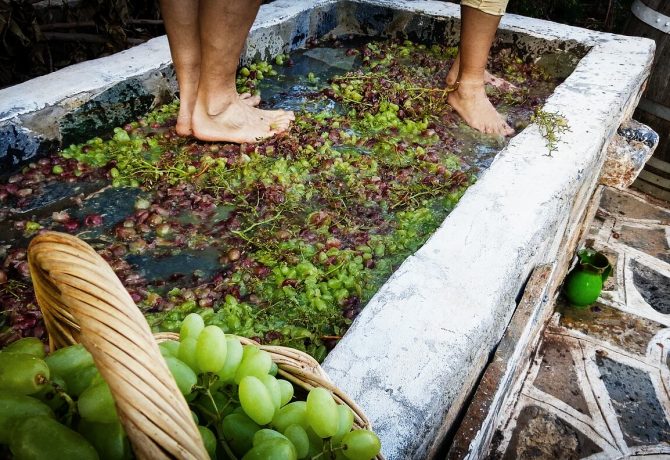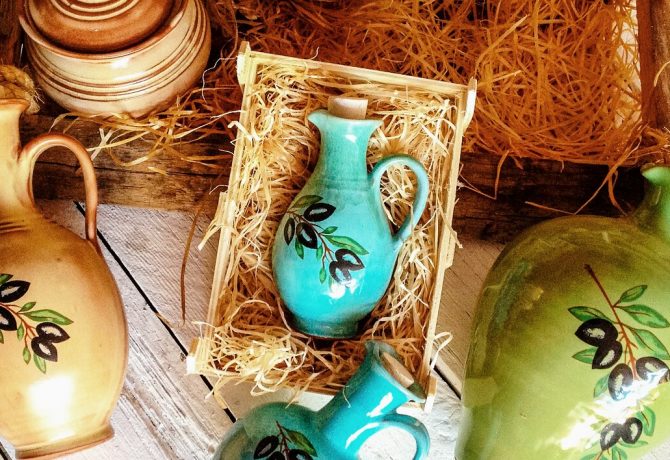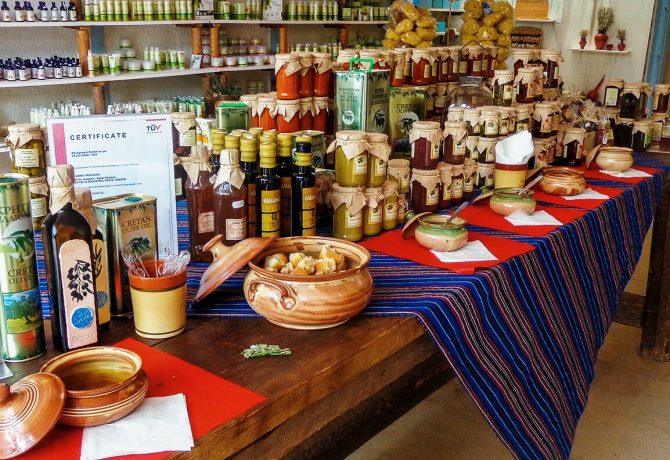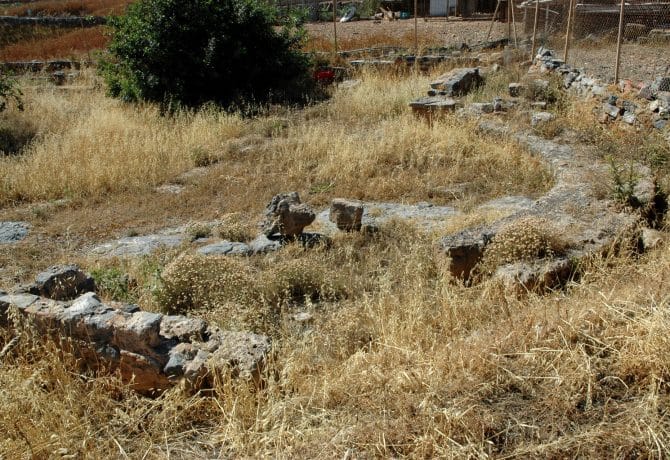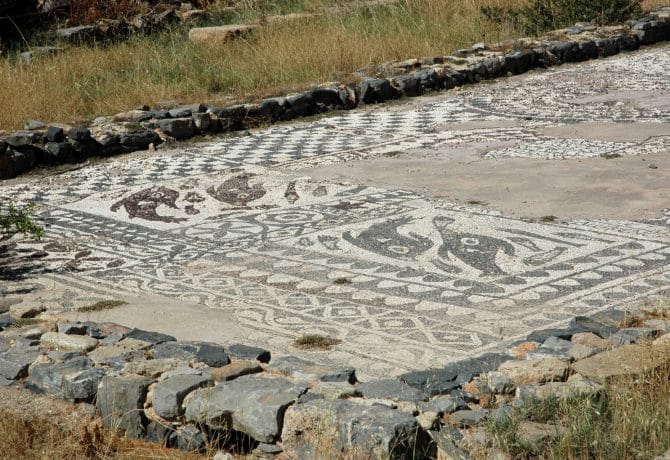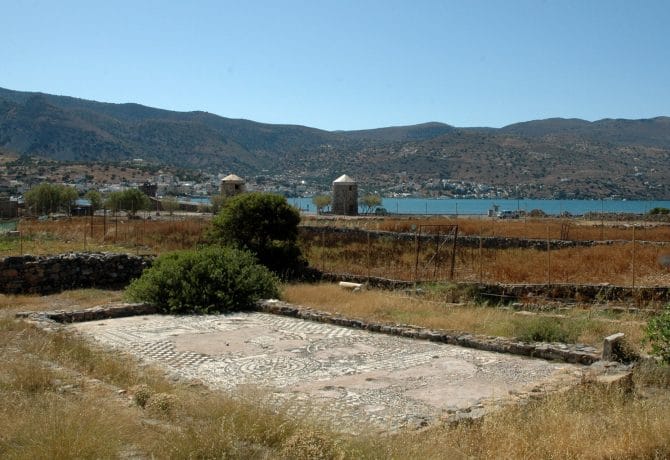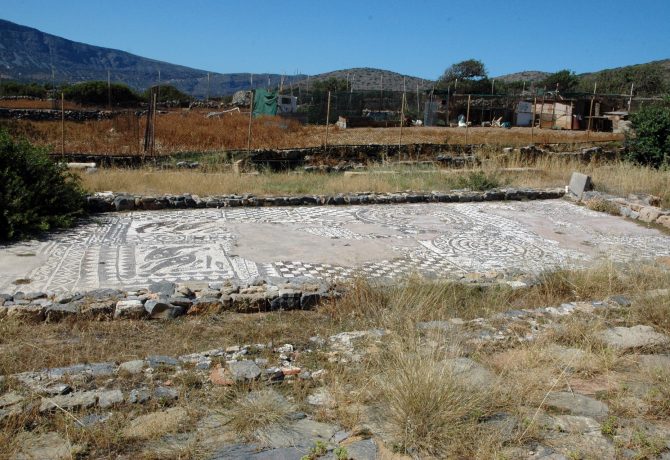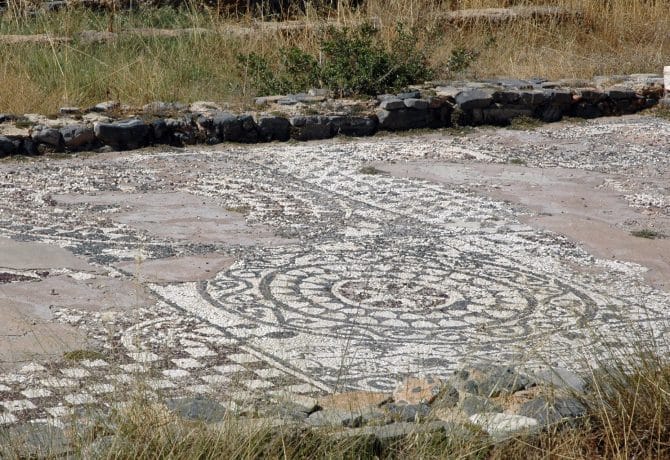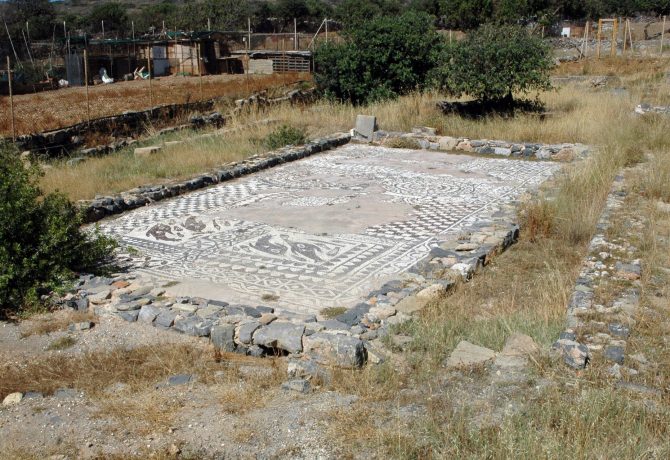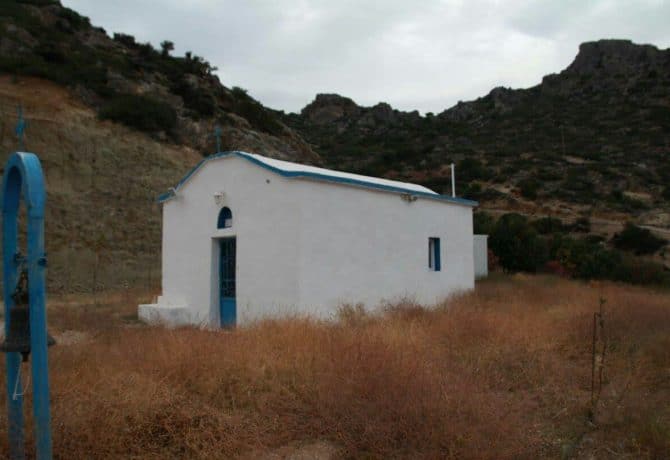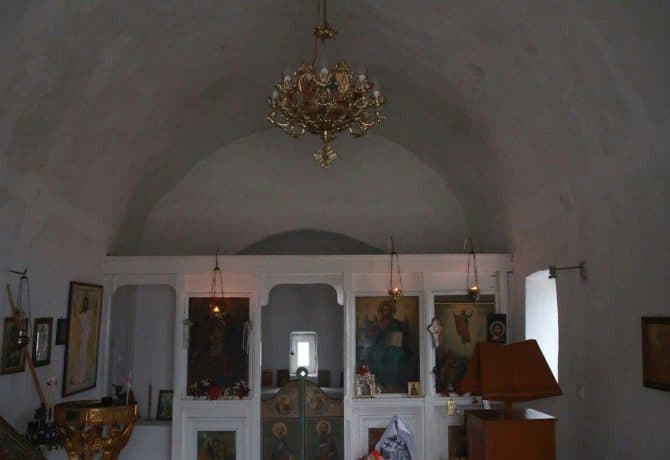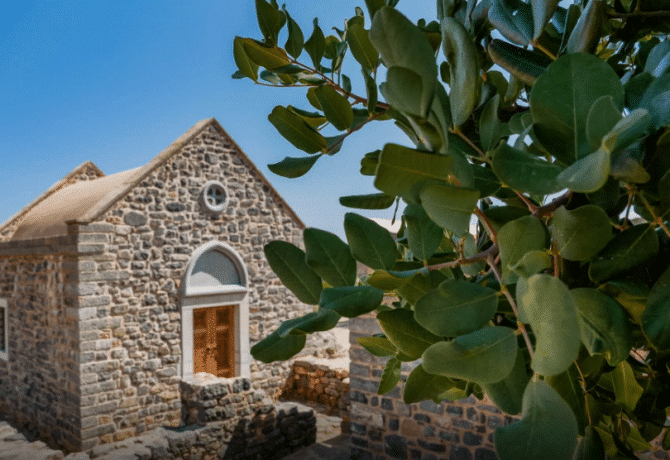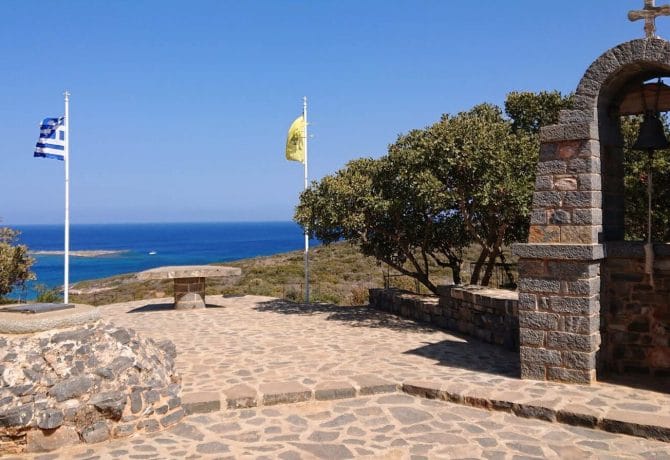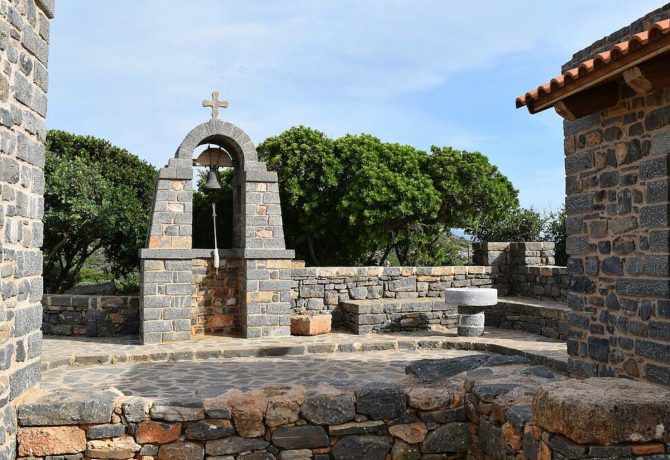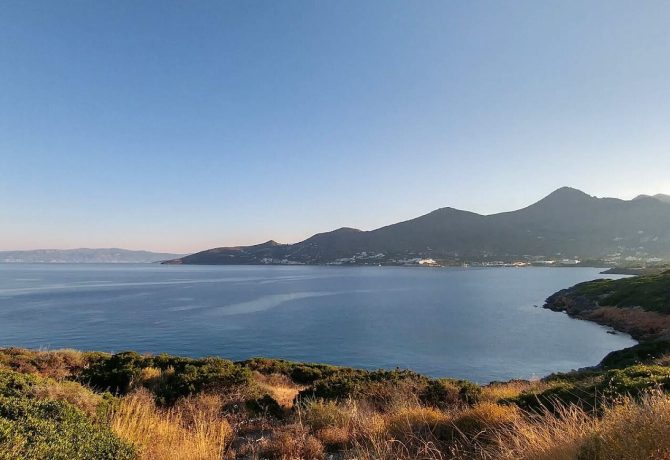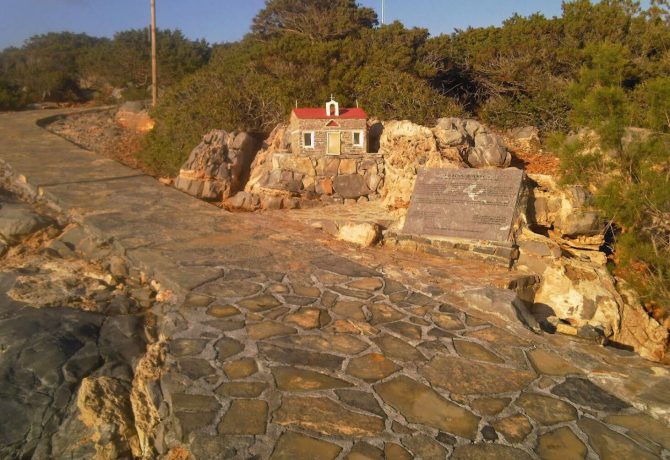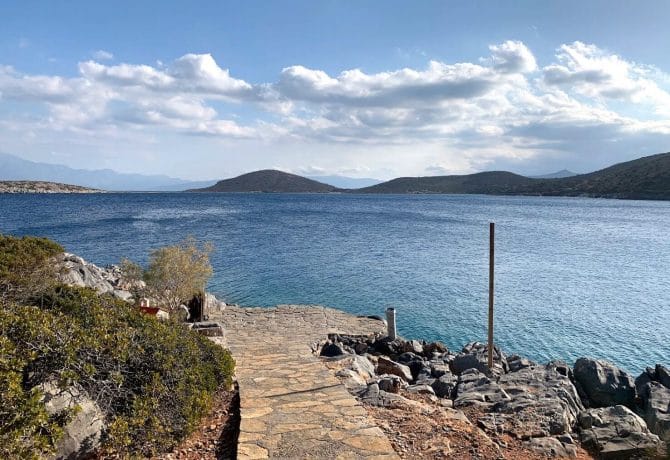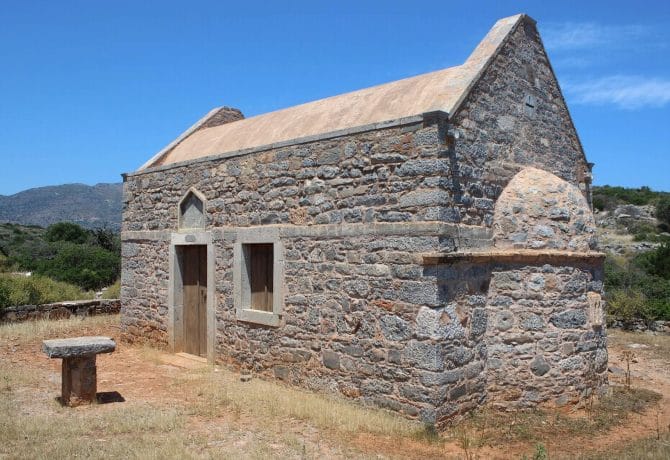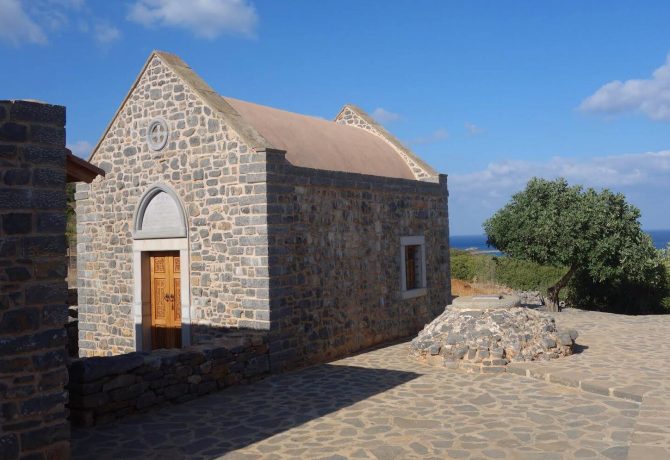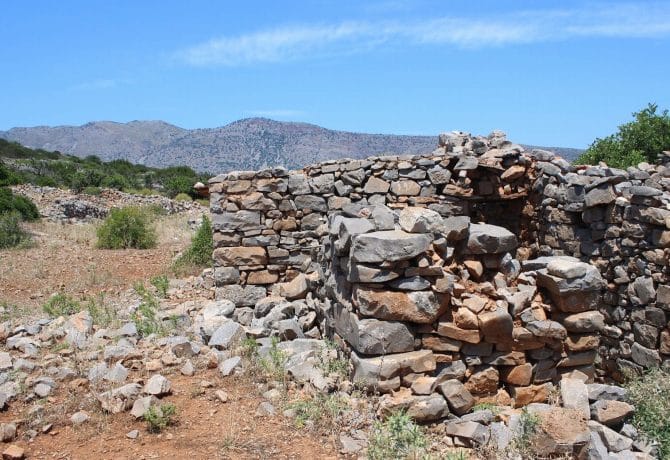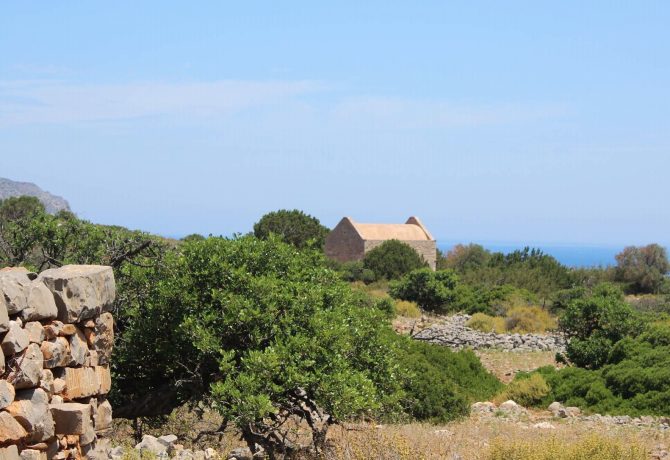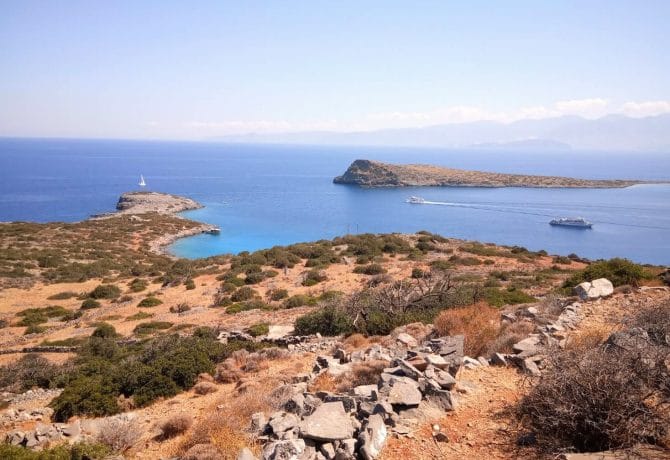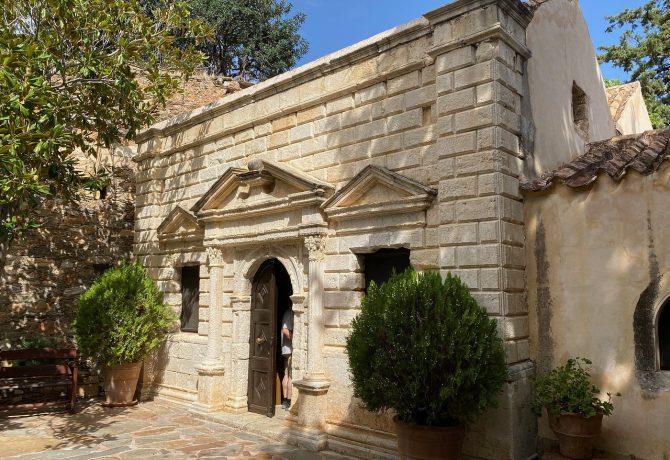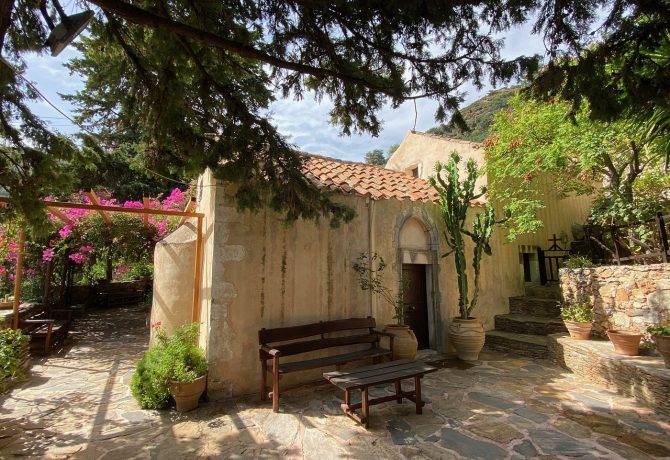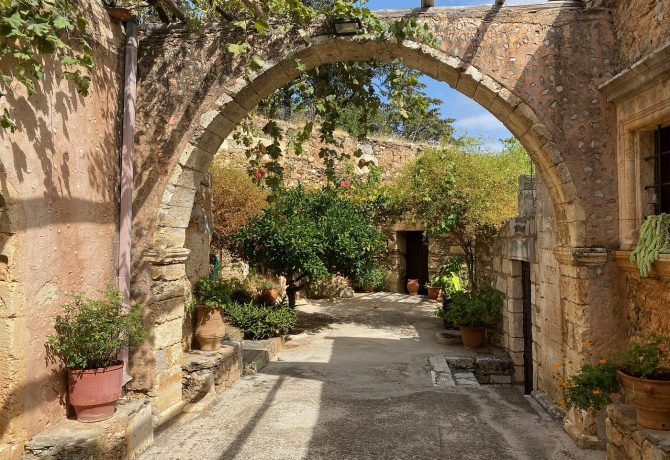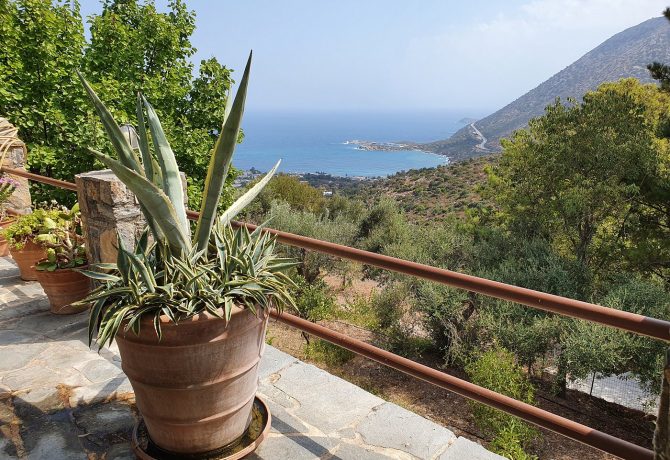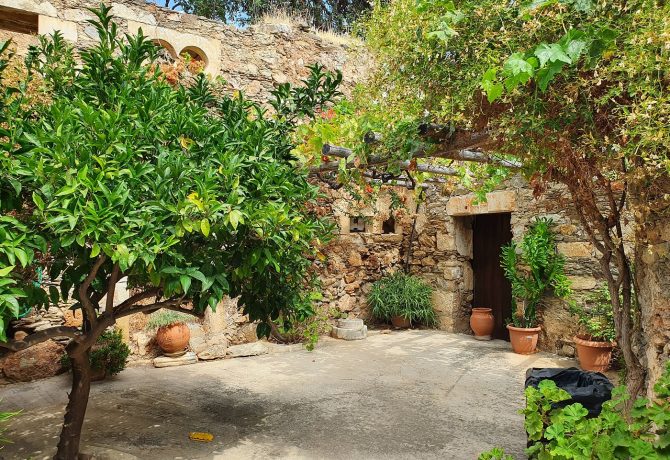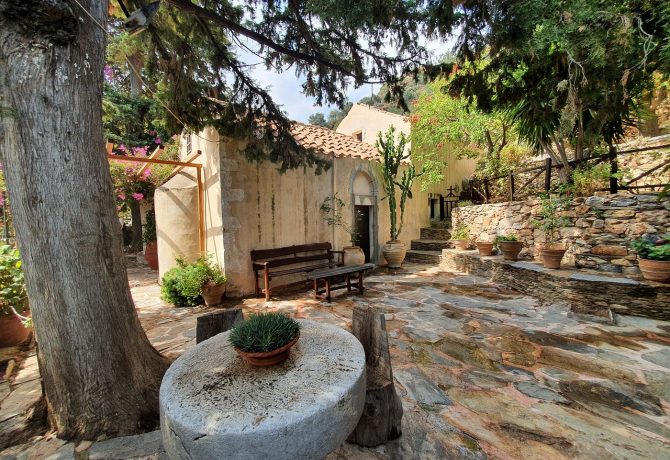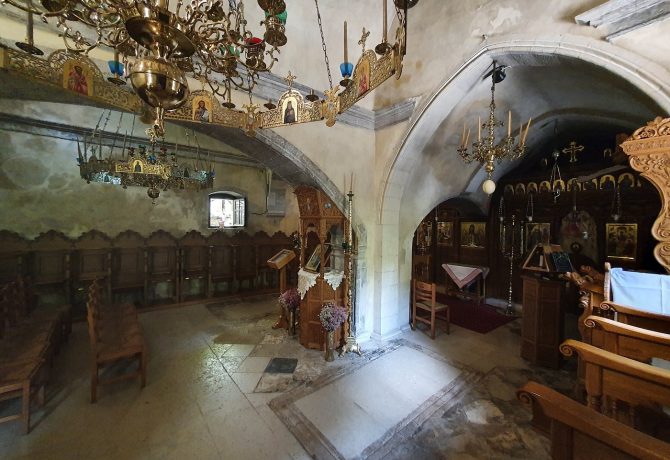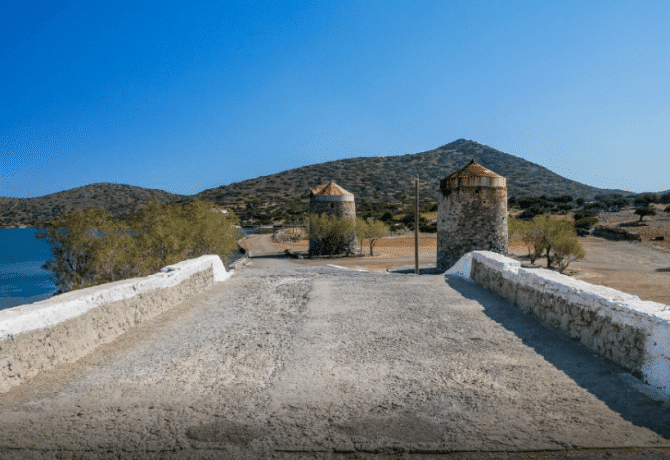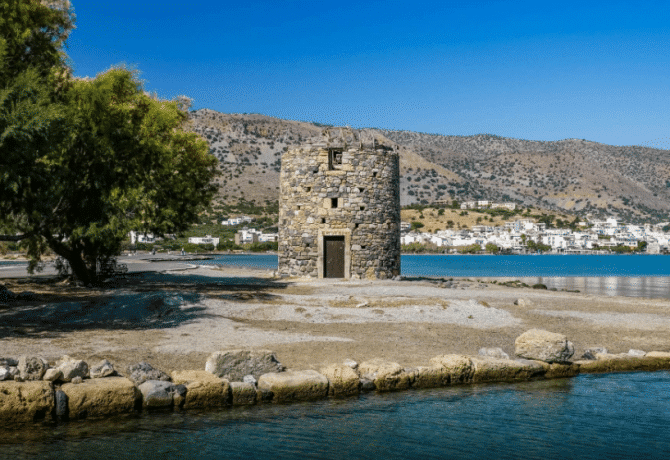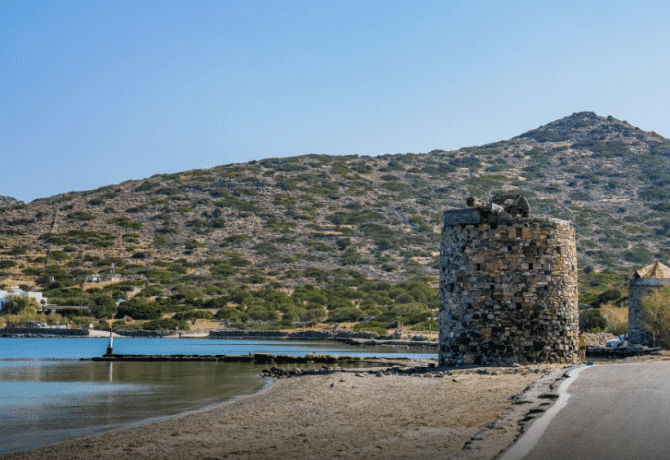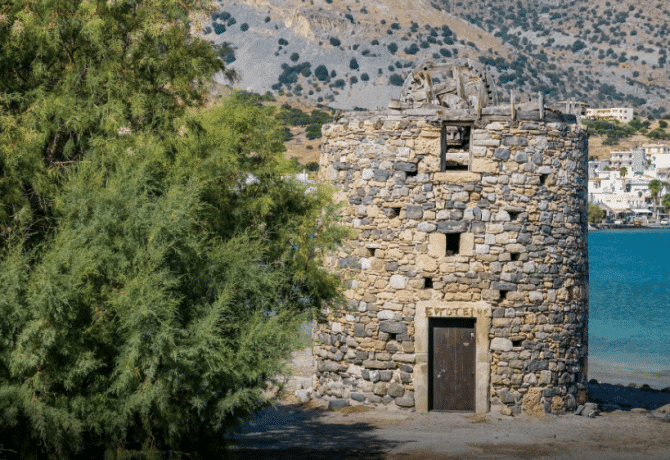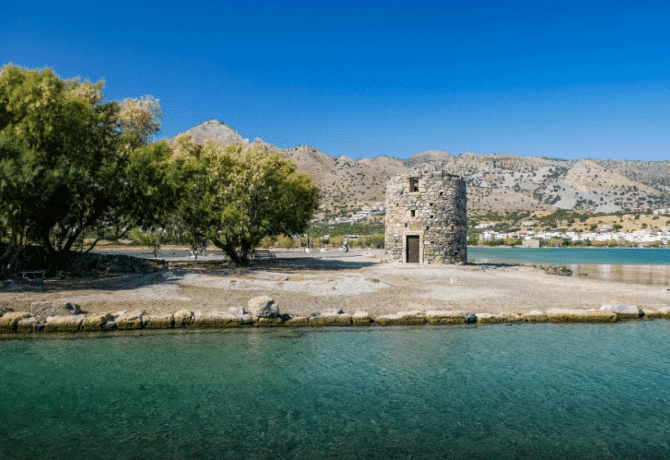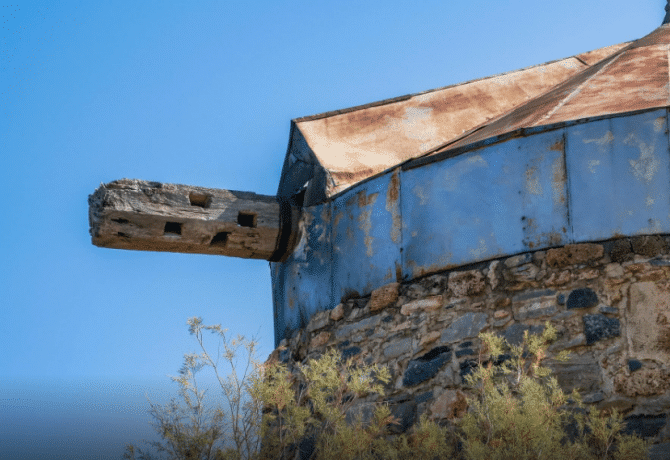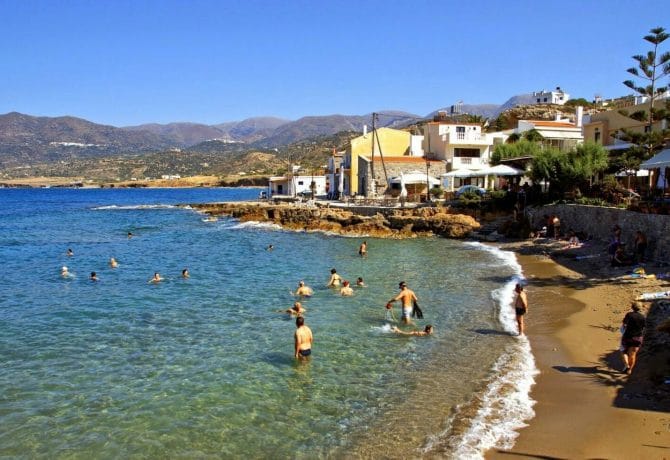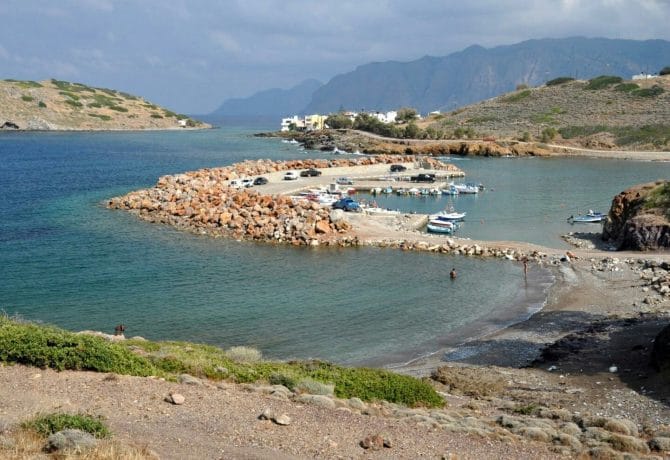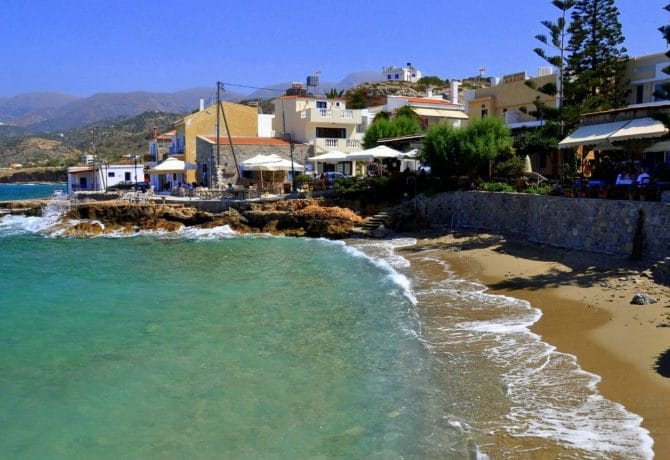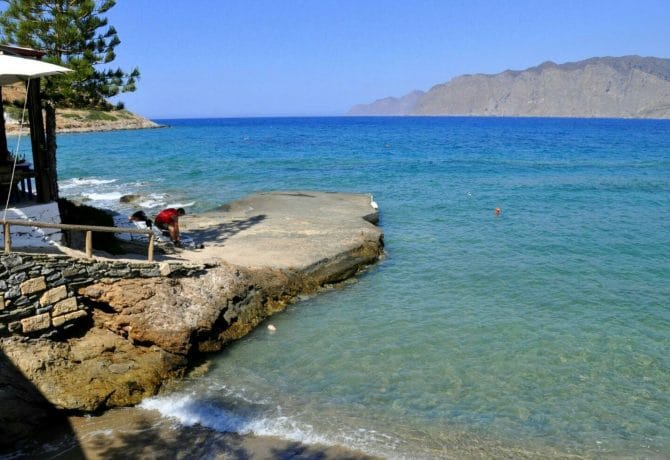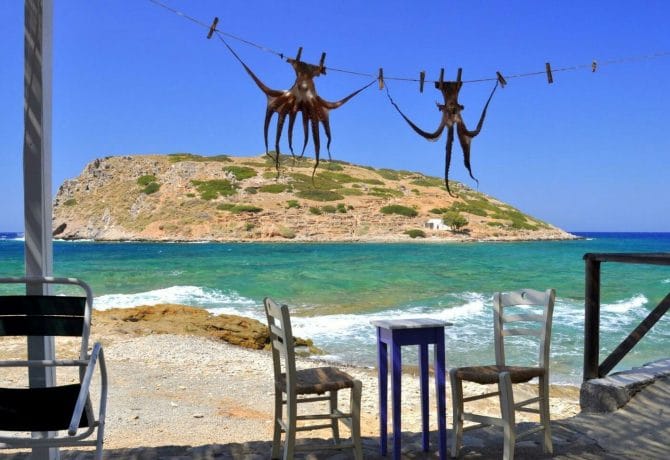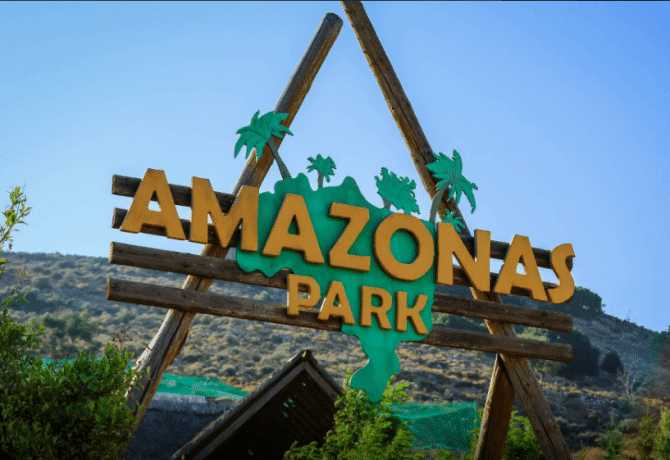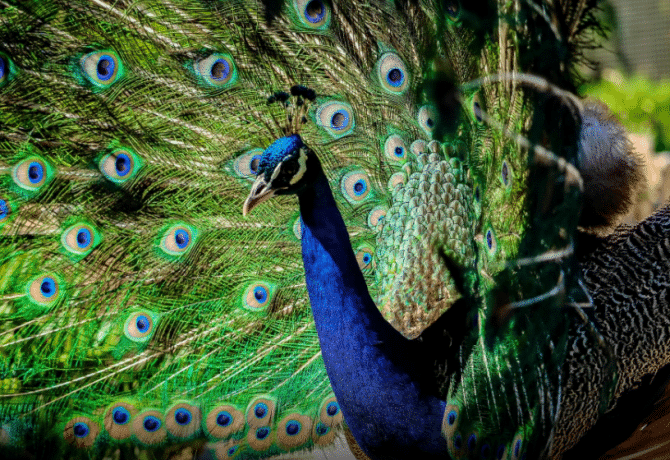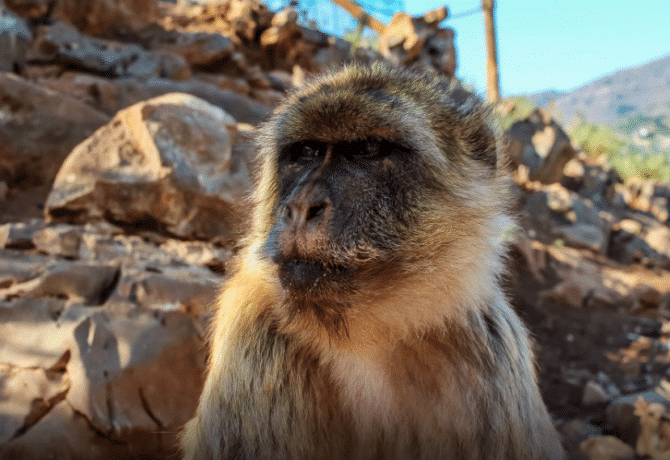The Cretan resort of Elounda became popular after the release of the Hollywood film “Stripes of the Moon”. Since then, the town has been chosen by the stars of show business. Bono, Madonna, Lady Gaga and many others come here. Gradually, the former fishing village turned into the most prestigious holiday destination with the most expensive hotels, restaurants and entertainment. The latter, by the way, there are not so many. Lovers of noisy parties usually stay in Hersonissos or Malia. Here they prefer a measured rest, so hotels specialize in accepting families with children, adults without children, single or romantically inclined travelers. Tourists come here for clean beaches (the coast has repeatedly been marked by the Blue Flag for high standards of cleanliness), calm sea with a long swimming season and picturesque views. No less interesting are the local attractions.
- 1 Port of Elounda
- 2 Spinalonga Island
- 3 Salt marshes of Elounda
- 4 Ancient city of Olus
- 5 Cretan Farm
- 6 Religious monument Christian Basilica Poros Elounda
- 7 Ascension Church
- 8 St. Luke’s Church
- 9 Church of St. Phocas
- 10 Church of St. Ioannis
- 11 Monastery of Agios Ioannis Prodromos
- 12 Collection of old windmills Vrouhas Windmills
- 13 Mochlos Island and Village
- 14 Amazonas Park
- 15 Attractions Elounda on map
Port of Elounda
The port of Elounda is not inferior in fashionability to the village of the same name. It is located in a picturesque harbor, from the pier of which boats, yachts and pleasure craft regularly depart towards the island of Spinalonga. The bay is connected with the most “bottomless” island of Crete Voulizmeni with the help of an artificial channel. No one knows the exact depth around the perimeter, presumably in the center it reaches 64 meters. Numerous local legends and horror stories are associated with this reservoir. After World War II, the Cretans threw German equipment and symbols off a cliff into the water. They were seen at the bottom by Jacques-yves Cousteau, who came to explore the lake in the 60s. Thanks to the artificial canal from the port of Elounda, you can get to the city of Agios Nikolaos not only by road, but also by water. It is the center of the community, which includes the village. The distance is 12 km. Once the port played a crucial role in the life of the region. During the Venetian rule, salt deposits were found here. Since the mineral was valued higher than gold, a powerful protection of the port from pirates and other lovers of profit at someone else’s expense was thought out. Today from the harbor you can go on a boat trip, paid fishing or buy fresh fish of the morning catch.
Address: Elounda village, Agios Nikolaos, Crete, Greece
Spinalonga Island
This place is also called the “Island of the Living Dead”. But he had an interesting history before the largest leprosarium in Crete opened here. In ancient times, it was part of the coast. Here was the ancient Greek port city of Olus. In 201 BC there was a strong earthquake. Most of the city went under water, and Spinalonga turned into a peninsula connected to the land by an isthmus. When the Venetians began to develop local salt marshes, it was decided to turn Spinalonga into an impregnable fortress. To begin with, the territory was completely separated from the coast and turned into an island. Then a fortress was built there (1579), which served as a reliable shield against attacks from the sea. The inhabitants, who at one time left the shore deep into Crete, returned to their native lands. They were no longer threatened by pirate raids. They were able to go about their usual business – developing crafts and fishing. The Venetians did not surrender the fortress to the troops of the Ottoman Empire until 1715. For 45 years, they controlled the extraction of salt in the region and its delivery to European countries. After the surrender of the fortress, the Turks built their settlement next to it, forbidding the Cretans to settle there. When Greece became an independent state, people with leprosy were gathered on the island. The Turks themselves left Spinalonga, fearing a deadly disease. Leprosarium existed from 1903 to 1955, until a cure for leprosy was invented. A colony of leprosy patients remained on the island until 1957. Food and water were delivered to them by boat. Doctors monitored the birth rate. If a sick woman had a healthy child, he was taken away and sent to one of the Cretan shelters. When leprosy was completely defeated, Spinalonga was included in the list of tourist sites. The gloomy beauty of the ruins of the ancient fortress has repeatedly inspired filmmakers to create another horror film or psychological thriller.
From Agios Nikolaos to Plaka and Elounda there are regular buses.
Salt marshes of Elounda
In the shallow waters along the coast of the Gulf of Mirabello, stone fences of individual sections of water catch the eye. At first, they are mistaken for the ruins of the drowned city of Olus. In fact, these are artificial tanks for collecting salt. Sea water evaporated over the summer and salt remained in them, which in the autumn was collected and taken to the warehouses located in the village. Salt was mined here by the Venetians in the 15th century. Thanks to the protection from the winds, the fortified fortress on Spinalonga, they managed to hold this area until the early 1700s, not allowing the Turks to capture it. Elounda supplied salt to most of Europe. In the early 20th century, when Greece and Crete merged, the country for a long time held a monopoly on the extraction and sale of salt in Europe. Salt marshes were developed until 1975, then were abandoned. Elounda began to turn into a fashionable resort, so the local population decided to make money on tourists. Today, salt production is trying to establish, but the technology was irretrievably destroyed. Near the remaining tanks there are signs with a ban on fishing and swimming.
Address: Elounda village, Agios Nikolaos, Crete, Greece
Ancient city of Olus
During low tides, the ruins of buildings, columns, walls protrude to the surface of the water. These are the remains of the ancient city of Olus, which went under water as a result of an earthquake in 201 BC. All that remains of it today is covered by the waters of the Gulf of Mirabello. On the island of Spinalonga there are several destroyed objects, in the north of the dam at low tide fragments of floor mosaics are visible. Historians learned about the history of the ancient Greek port from the surviving letter about the agreement of Olus to interact with other polises and cities of Crete in trade and strengthening friendly relations. The document is kept in the Louvre. This city of the Minoan era was mentioned by Homes in the Iliad as a place where stone was mined, cold weapons were made. Today, the ruins of the sunken city are the main underwater attraction. They attract divers from all over the world. Equipment is provided by numerous rental points located on the beaches. You can come here with your scuba diving. The inconvenience is the road itself. There are no direct buses to Elounda and tourists have to make a transfer to Agios Nikolaos. Therefore, it is recommended to use the taxi service or hotels will help to organize a transfer and meeting at the airport.
Address: Agios Nikolaos Municipality 721 00, Greece
Cretan Farm
A Cretan farm is organized on the territory of the old olive oil and wine factory, which was founded in 1882. This is a kind of museum of ancient handicrafts and traditional recipes of authentic cuisine. This is a family business aimed at familiarizing guests of the island with the secrets of cooking Cretan dishes and ancient customs that arose before the advent of the resort and tourist zone in Elounda. Each visitor at the entrance is given a tablet with a map of the area, which indicates the objects of the farm. Guests can take their own walks around the property, making their own route. There are meadows of Cretan herbs and open stations for their drying in the sun, olive tree plantations and an ancient press for oil production, a winery, a cheese factory, an apiary. In the open kitchen, master classes on cooking national food are held.
Site: https://www.cretanoliveoilfarm.com/
Address: 2 km from Ag. Nikolaos 721 00, Crete, Greece
Religious monument Christian Basilica Poros Elounda
After the earthquake, as a result of which Olus went under water, an isthmus was formed between the coast and the Spinalonga peninsula. The settlement of Alingos soon appeared on it. Already in the 6th century AD. it was mentioned in the annals as Elunga. In the first Byzantine period, early Christian churches began to appear here. Archaeologists have found two basilicas in the vicinity. One of them is located on the edge of a gorge near the Kolokit Peninsula. The temple was built in the tradition of early Christian basilicas of the 5th century. It is a single-nave building with a small belfry above the main entrance and a small window. Nearby man-made towers of stones are built. The idyll is complemented by a picturesque view.
Address: Καλυδών 720 53, Greece
Ascension Church
Further, if you go through the bridge, you can visit the Ascension Church. The building was built in the Byzantine style. It is a building with gray walls and an orange roof, preserved from the period of Venetian administration of the island. It was built near the place where the ancient Olus went under water. Local parishioners have one custom. On the day of the Ascension of Christ, they descend to the sea, collect algae and stones, binding them in bundles. According to local beliefs, these peculiar bouquets are a symbol of life. The temple is active. Near it there is a small parking for private cars.
GPS: 35.256091, 25.736899
St. Luke’s Church
A little higher on the hill is another ancient Christian church – the Church of St. Luke. In architecture, it resembles a Catholic church. Judging by the Greek and Venetian flags developing over the structure, perhaps it is. A rocky path leads to the temple, which can only be climbed on foot. Tourists are not afraid of such a prospect, so there are always enough people on the territory. The yard is also lined with stone, surrounded by a low fence of masonry. The building is so ascetic and small that it seems as if it was created for one person. From the height there is an amazing view of the surroundings. Here you can take a lot of interesting photos.
Address: Agios Nikolaos 720 53, Greece
Church of St. Phocas
This temple is located a short distance from the village in a corner of the wilderness. A walk to it takes place along secluded paths. The building is built on a hill with beautiful views. Nearby is a wild beach. The bottom is rocky, so you will need special shoes. Here come lovers of a quiet uncrowded holiday. Here the atmosphere itself is saturated with silence and laconicism. The courtyard near the temple is small. The building has two entrances, a small window, no belfry.
Address: Ekklisia Agios Fokas, Schisma Elountas, Greece
As for the beaches of Elounda, they are equipped above all praise. Elite five-star hotels (and there are 14 of them in the village), have their own beach areas with piers, boathouses for yachts. The most popular public beach is Skisma. It is ideal for families with children. Next to it there is a rental area for sports and bathing equipment, a water entertainment center, a children’s and volleyball court, and numerous cafes. Wild beaches can be found on the outskirts of the village.
Church of St. Ioannis
Climbing up the rocks of Elounda, you can come to the small church of St. Ioannis. The road is difficult, part of it passes through stone collapses. With children, you should not go here, and physically strong tourists are waiting for unforgettable views from the height of the mountains. The church itself is built in the style of Byzantine basilicas. The stone structure looks organically against the background of the natural landscape. It is ascetic, like other Orthodox churches of past eras.
Address: Agios Nikolaos Municipality 721 00, Greece
Monastery of Agios Ioannis Prodromos
The ancient monastery of Agios Ioannis Prodromos is located in the mountains. No one knows exactly when the foreigners gathered here and founded this monastery. All buildings are made of stone, the yard is surrounded by low masonry. In one of the sides of the monastery completely closes the steep rock. The entrance to the temple is beautifully decorated with two semi-columns, evergreen shrubs are planted near the windows. The room for worship is small. Under the vaulted ceiling there is a low two-level iconostasis, a prayer book, there is no painting on the walls. The outdoor gallery offers views of the sea, the cape and the mountains covered with vegetation, the bay and the island of Spinalonga. Plants in ceramic pots decorate the entire territory of the monastery. They stand near the temple, the cell, throughout the observation gallery, near the stairs.
At this object ends a tour of the ancient temples of Elounda. In the center of the village for Orthodox believers opened a church, consecrated in honor of Emperor Constantine the Great and Mother Helena. This is a functioning temple that receives parishioners at any time of daylight. On holidays, bells ring here, gathering the local population for morning or lunch. The building is built of light stone, the wooden dome is skillfully painted. Fans of iconography will be interested in the wooden iconostasis.
In the center there are hotels of different price categories. When booking, you can find a five-star level of comfort and accommodation in economy class. Lowest price per night is 50 US dollars. Inexpensive hotel complexes includeRoyal Marmin Bay Boutique & Art,Elounda Garden Suites Heated Pool,Elounda Krini,Elounda Heights. All of them are close to the beaches and the sea.
Collection of old windmills Vrouhas Windmills
The following days of rest can be devoted to trips to interesting sights in the vicinity of Elounda. One of them is located near Spinalonga. It’s a collection of old windmills. Such designs were characteristic of Eastern Crete, despite the fact that the rest of the island preferred water mills more. For the Cretan province of Mirabello, where Elounda is located, such powerful windmills lined with stone were especially important. There has always been a lack of fresh water, but the sea winds blew constantly. Strong stone mills provided flour to the population of the prefecture. They were built on the slopes of the hills, which were constantly blown by the winds. The Vrouhas Windmills collection belongs to the architectural monuments of the early 19th century. It includes three rotary mills. Being circular structures, they turned in the direction of the wind. They were designed by Antonis Kapsoritakis. The design of the masonry is complex. The diameter of the structure is 5 meters with a wall thickness of 80 cm Mills are perfectly preserved and are now an ornament of the area and a background for lovers of photo shoots. Near the monument of architecture there is parking. The mills are installed near the canal connecting the Voulizeni lagoon to the south coast.
Mochlos Island and Village
To get to know Crete from the inside, it is worth going to the fishing village of Mochlos, and at the same time visit the island of the same name, located right there. Both sites are located on the east coast of mirabello Bay. In a pretty village, tourists come to visit the local taverns, which prepare traditional fish dishes. Adventurers and lovers of historical secrets go to the island. It can be reached by swimming, but it is better to hire a boat from the locals. About 4 thousand years ago, the island was connected to the coast by a narrow isthmus. The land was protected from attack by the sea from three sides. In the Minoan period, there was a strategically important settlement, the ruins of which are still being studied by archaeologists. Excavations began in 1908 by American Richard Seeger. He was the first to discover several dozen burials that escaped looting and vandalism. Among the graves were the graves of rich people and artisans. The archaeologist found a lot of historically important objects and precious jewelry. Then the question arose why the settlement died and by whom it was destroyed. The fact is that the houses were built on volcanic ash, so after the monstrous earthquake that destroyed Olus and other cities of the coast. Studies of the ancient settlement are still conducted by the staff and students of the University of North Carolina, as well as numerous volunteers who love the mysteries of history.
The Greeks are a very musical people. Every year, a three-day festival is held in the village of Mochlos, to which the leading vocal masters of the country come. The dates of the event are constantly changing, there is no site, so if the trip takes place in the summer, it is quite possible to accidentally get on it. A motorway from Agios Nikolaus to Sitia passes through the village. Index “8 km”.
Amazonas Park
The open-air zoo “Amazonas” was opened in 2011. There is a large collection of animals and birds from all continents of the world. In many large bird enclosures you can see parrots from Latin America and cockroots from Australia. The largest enclosure is home to larger species of parrots. Lemurs are almost tame, they willingly take pictures with visitors and pose for the camera like real models. There are a lot of monkeys in the park. People are allowed to enter the enclosures. Primates differ in different characters. For example, Berber from Gibraltar may not pay any attention to visitors, and smaller species have increased activity and immediately begin to jump on a person and try to play with him. Other animals also live on the territory. Many of them are very friendly and love to be stroked. The distance from Elounda to the zoo is approximately 30 km. You need to go deep into the island of Crete on the New National Road (BOAK) past the town of Naples.
Official site: http://www.crete-guide.info/Amazonas_Park.htm
It is best to move around the sights by rented transport or taxi. Travel agencies at hotel complexes will help to organize trips to the most interesting places of the coast. The most popular among tourists are the hotels«Domes of Elounda»,«Elounda Garden Suites Heated Pool», «Blue Palace, a Luxury Collection Resort & Spa, Crete» (rating taken from the site Tripadvisor).

